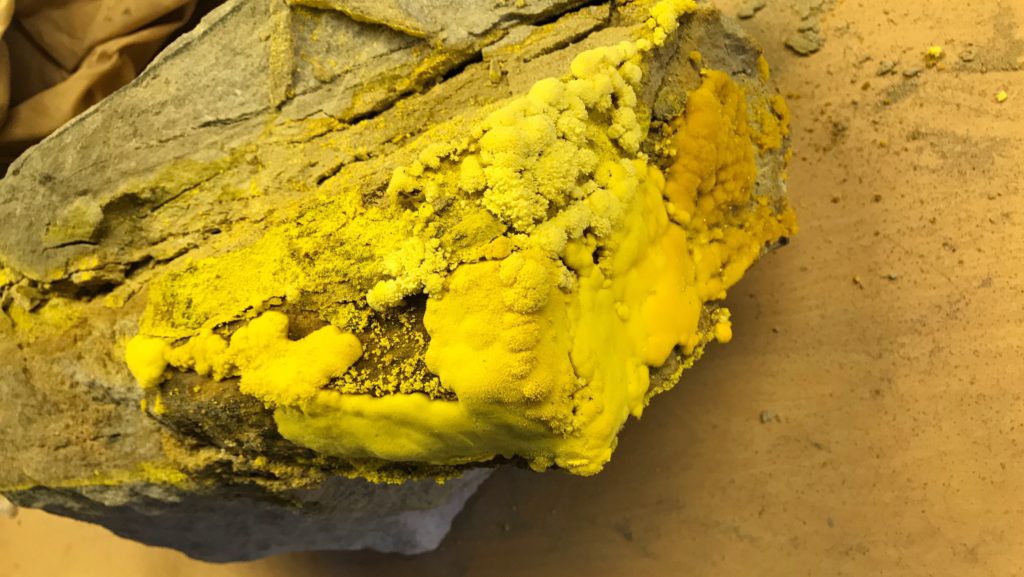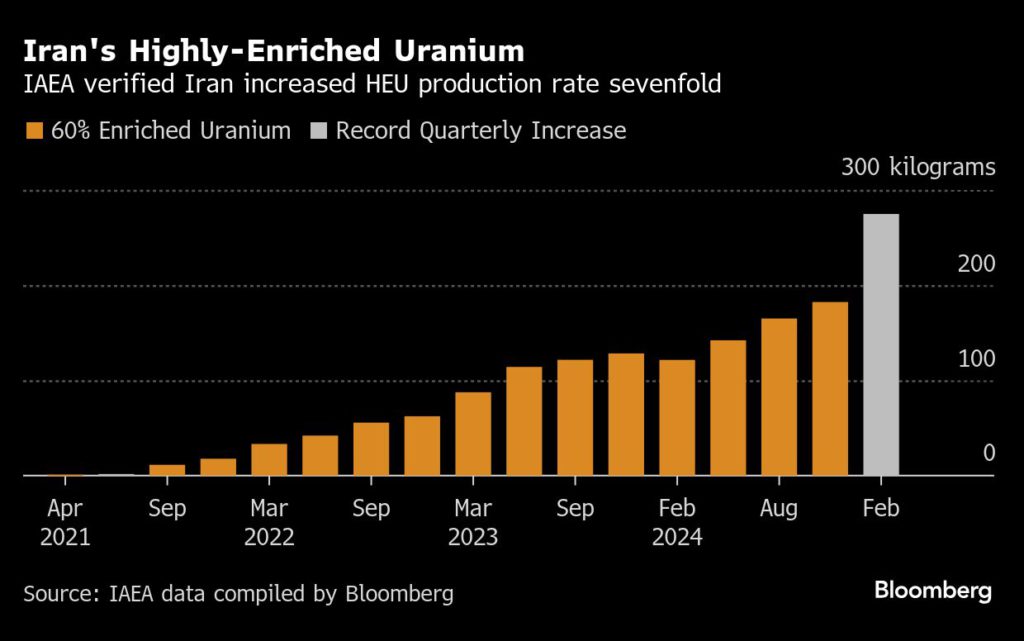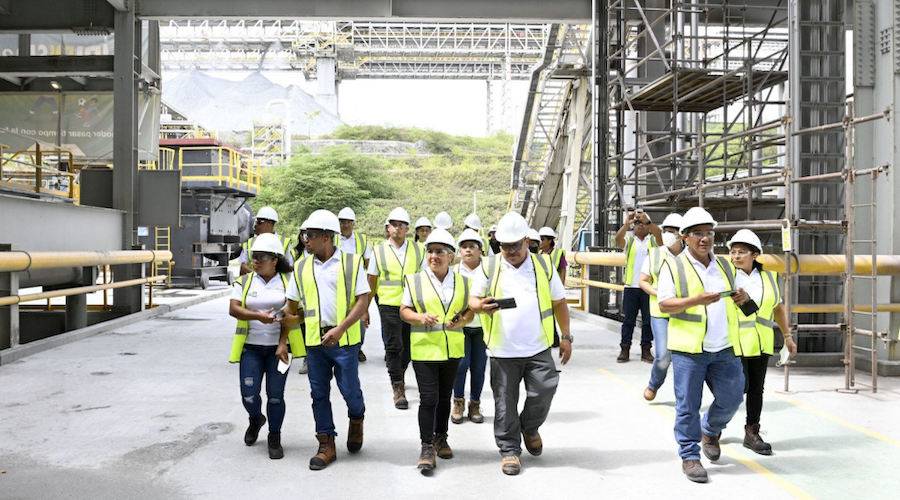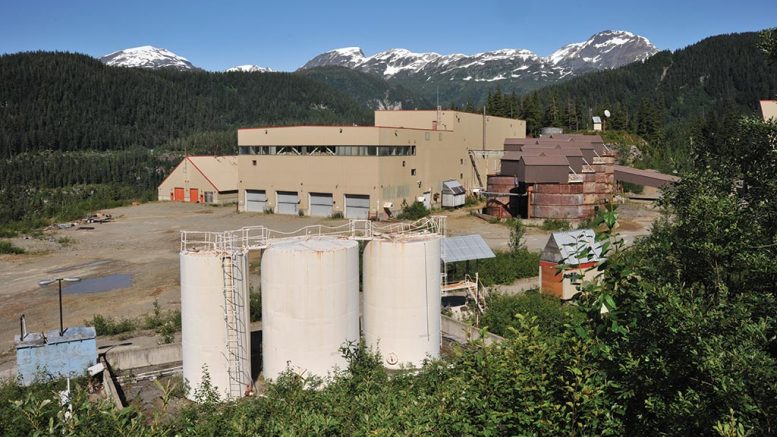Iran’s expanded uranium mining hints at much bigger reserves

Iran is expanding uranium production after indicating that it has significantly higher reserves of the metal than previously estimated, according to the latest nuclear-watchdog data.
The new figures, published Tuesday in the biennial Red Book — a survey of the uranium industry — may trigger concern over the direction of Iran’s nuclear program. The Islamic Republic has been digging at more than a half dozen new uranium mines since 2022 yet its resources are considered uneconomic and well below what is needed to fuel a nuclear reactor.
Tehran’s government “indicates that Iran’s uranium reserves are much larger than previously estimated,” wrote the authors of the report, who work at the Paris-based Nuclear Energy Agency and Vienna-based International Atomic Energy Agency. The country may almost quadruple ore production to 71 tons this year, according to the report.
Unlike other parts of the nuclear-fuel cycle — the sprawling industrial process that concentrates uranium isotopes into fuel for energy — upstream mining activities are not frequently audited. IAEA inspectors track enriched uranium worldwide at gram levels because the material can also be used in weapons, but uranium ore can be mined and traded with fewer regulations.
While Iran has always maintained its nuclear program is peaceful, in 2015 world powers negotiated caps on its work in exchange for sanctions relief. US President Donald Trump left that agreement — which included IAEA safeguards on Iranian mining activities — in May 2018 and reimposed stringent penalties on Iran’s economy.

Since returning to office, Trump has said he wants a new nuclear agreement with Iran and has raised the threat of military action if Tehran doesn’t join direct talks to strike an accord soon.
After months of tensions, Tehran said it would hold talks with the US on Saturday in Muscat, Oman. Negotiations will be led by Foreign Minister Abbas Araghchi and US special envoy to the Middle East Steve Witkoff and mediated by Oman’s foreign minister, according to Iran’s state-run Nour News.
Iran’s uranium mining activities have drawn scrutiny from security analysts who point out that, while its reserves aren’t enough to fuel its lone atomic-power reactor, they would be sufficient to build nuclear bombs.
The reactor at Iran’s Bushehr nuclear-power plant needs the equivalent of about 160 tons (145.15 tons) of uranium ore annually, but the country has been mining just 21 tons a year. Russia’s Rosatom Corp., which built the plant, also supplies the fuel.
“Despite having already acquired sufficient uranium to supply a sizable nuclear weapons arsenal, Iran’s domestic uranium resources do not match its nuclear power reactor goals, meaning it cannot have an economically viable, domestic source of uranium,” wrote the Washington-based Institute for Science and International Security in a report last year.
Iran’s engineers are now producing the equivalent of one bomb’s worth of 60%-enriched uranium per month, according to IAEA data. In February, an IAEA report noted that the country’s stockpile of this highly-enriched uranium had increased by 50% over the preceding three months, to 275 kilograms.
(By Jonathan Tirone)
More News
{{ commodity.name }}
{{ post.title }}
{{ post.date }}




Comments